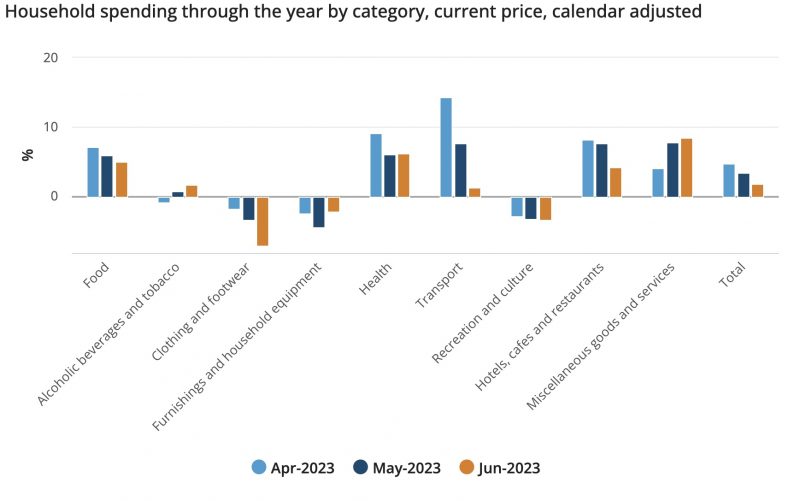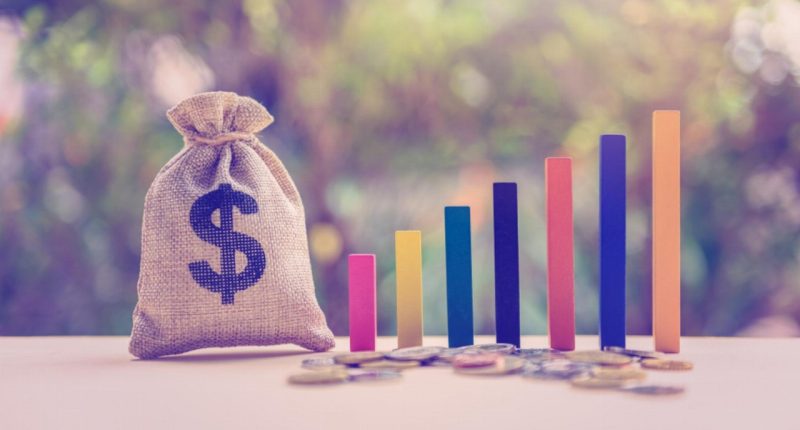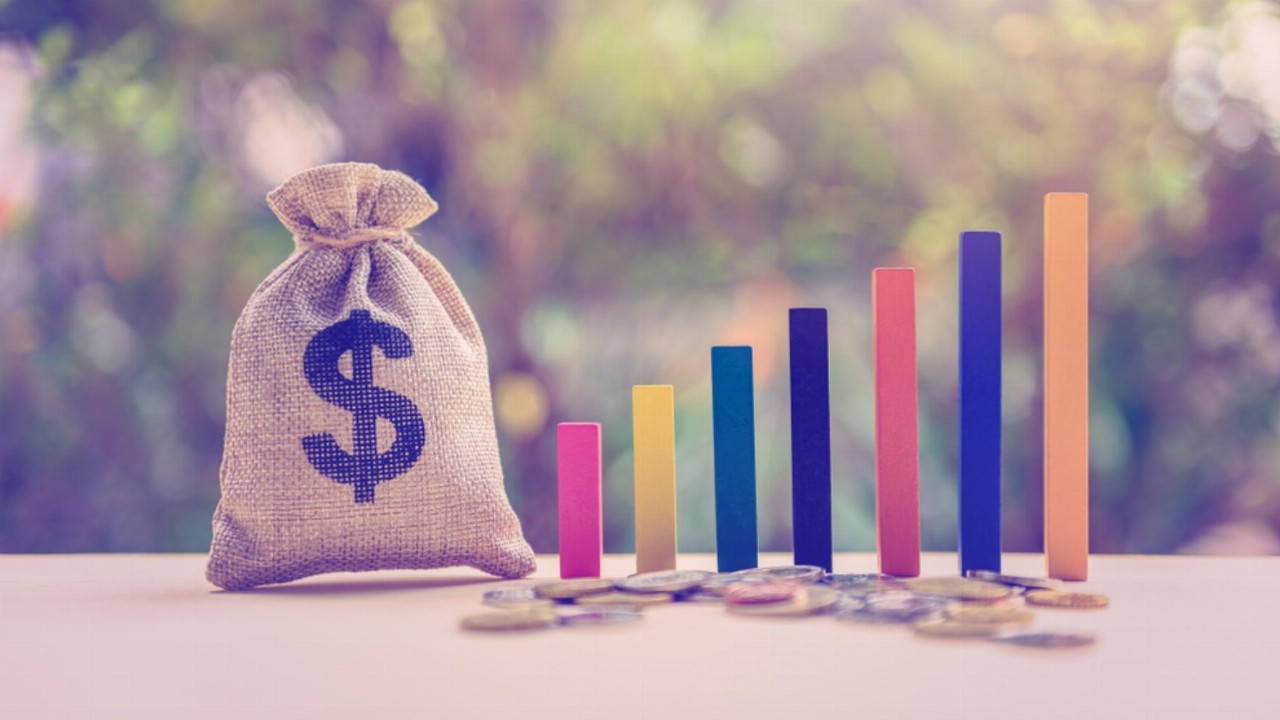The Australian Bureau of Statistics’ Monthly Household Spending Indicator was released today, revealing that household spending increased by 1.8 per cent year on year (YoY).
ABS Head of Business Indicators Ben Dorber said it was the smallest growth in household spending since February 2021.
“Spending on discretionary goods and services has decreased for the third consecutive month, falling by 0.7 per cent over the year, as households adapt to cost of living pressures,” he commented.
“Non-discretionary spending rose 4.2 per cent, however, the growth rate has been slowing since January, when it reached 21.0 per cent.”
Throughout 2023, household spending mainly surged in the services sector, increasing by 4.6 per cent.
However, spending on goods dropped by 1.2 per cent YoY, marking its most significant decline since July 2021.
Yearly spending
Between June 2022 and June 2023, expenditures on categories such as food, health, transport, hotels, cafes, and restaurants increased, while spending decreased, primarily in clothing and footwear, followed by furnishings and household equipment, and recreation and culture.

Spending increased in six out of the nine categories YoY, with the most substantial growth observed in miscellaneous goods and services for June, which grew by 8.4 per cent due to spending on childcare, legal services, and personal care.
Health and food followed suit, increasing by 6.2 and five per cent respectively, contributing to an overall YoY household spending growth of 4.6 per cent.
Spending by state
Household spending increased YoY for all states and territories except the Northern Territory.
The most significant surge in spending was observed in South Australia, rising by 3.7 per cent, followed by Western Australia, up by 2.9 per cent, and New South Wales, which experienced a 2.1 per cent increase.
In South Australia, the categories showing the strongest YoY growth in household spending were alcoholic beverages and tobacco, which rose by 11.2 per cent, followed by miscellaneous goods and services, growing by 9.7 per cent, and health, up by 8.1 per cent.
In Western Australia, health also saw the most substantial YoY growth in household spending, increasing by 11.4 per cent, followed again by miscellaneous goods and services, up by 5.2 per cent, and transport, up by 4.3 per cent.
New South Wales experienced the most significant YoY growth in household spending on miscellaneous goods and services, expanding by 10.4 per cent, followed by health with a 7.5 per cent increase and food, with a 6.5 per cent increase.
Despite lower spending growth rates across all states and territories this month compared to the previous month, the ACT experienced the most significant decline in YoY growth, dropping from 4.0 per cent in May to 1.3 per cent in June.
These trends underscore changes in household spending patterns, indicating that consumers are adjusting their budgets to cope with the cost of living crisis.
A focus on essential services, like food, health, and transport appear to be of most concern to Australians right now as we head into the last leg of the year and the festive season.








